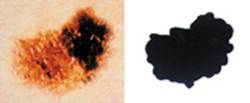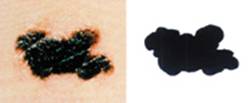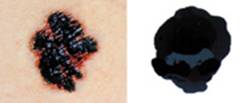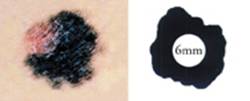Malignant MELANOMA
Melanoma is the most dangerous of skin cancers. Melanoma arises from pigment producing cells called melanocytes, and is responsible for majority of skin cancer-related deaths.
What are the warning signs of potential melanoma?
-
The first sign of melanoma is usually a change in the look of an old mole.
-
Another sign is the arrival of a new, odd-looking mole.
-
A mole that itches or bleeds should also be checked by your doctor.
-
Warning signs to look for in an old or new mole can be remembered as 'ABCDE'
Self-examination with image documentation of moles of your own body is important, however self-diagnosis and self-denial is a dangerous behavior.
If you have questions or concerns about a mole or dark spot on your skin, schedule an appointment for full body skin cancer check.
Call: (847) 518-9999
A-B-C-D-E is what you need to look for:
|
|
Asymmetry—One half of the shape is not identical to the other. |
|
|
Border—The edges seem to be irregular, notched, ragged, or blurred, and the color of the growth may spread to influence surrounding skin. |
|
|
Color—The color is not even and may contain a number of different colors, including brown, black and tan, as well as pink, blue, red, grey, or white. |
|
|
Diameter—There is usually a change in size. Most often, melanomas are bigger than the eraser on a pencil, which is roughly a quarter of an inch or 5 millimeters. |
E for Elevation or Enlargement: the mole is raised above the skin. A mole that is enlarging is probably the most important clue that it might be melanoma.
Diagnosis and Treatment
Diagnosis of suspicious mole is done by either
-
Skin biopsy
-
Surgical excision with appropriate margins
Standard treatment options for melanoma will be based on pathology findings
-
For early-stage melanoma complete surgical excision is a definitive treatment.
-
Melanomas with stage I-II might require Sentinel Lymph Node Biopsy and specialized University-Level Care
-
Stages III and IV require advanced University-Level care and management
Risk Factor
-
Family history of melanoma, skin cancer, pancreatic cancer, astrocytoma
-
Personal or family history of Dysplastic Nevus Syndrome
-
Personal history of malignant tumor or melanoma
-
Previous sun exposure, sunburns
-
Diagnosis of dysplastic or atypical nevi
-
Presence of irregular, prominent moles on skin
-
Changes in size, color, symmetry, bleeding, ulceration or other, noted in moles
For those in need of reliable and comprehensive information, news and updates about specific disease, we strongly recommended to register for free account with Medscape.com, site many medical professionals use for their references.
Early detection and removal of Melanoma is crucial - if caught and removed
early it is curable.
Call: (847) 518-9999
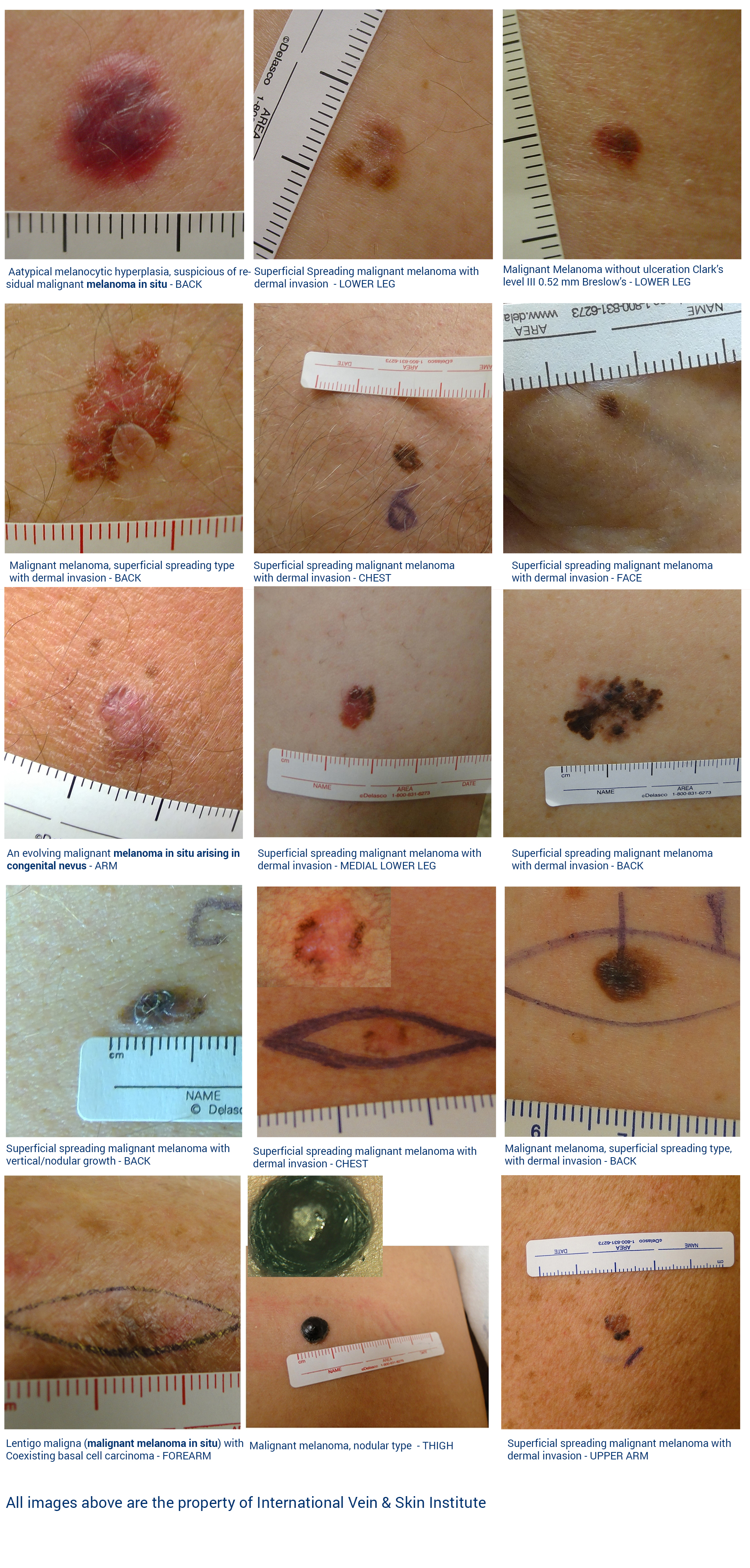
Majority of patients that were eventually diagnosed with advanced stages of malignant melanoma knew about presence of the skin lesion a long time before their diagnosis was made.
If you find any of the A-B-C-D-E changes listed above or, if you have questions
or concerns about a mole or dark spot on your skin,
schedule an appointment for a skin exam with IVSI
Call: (847) 518-9999

